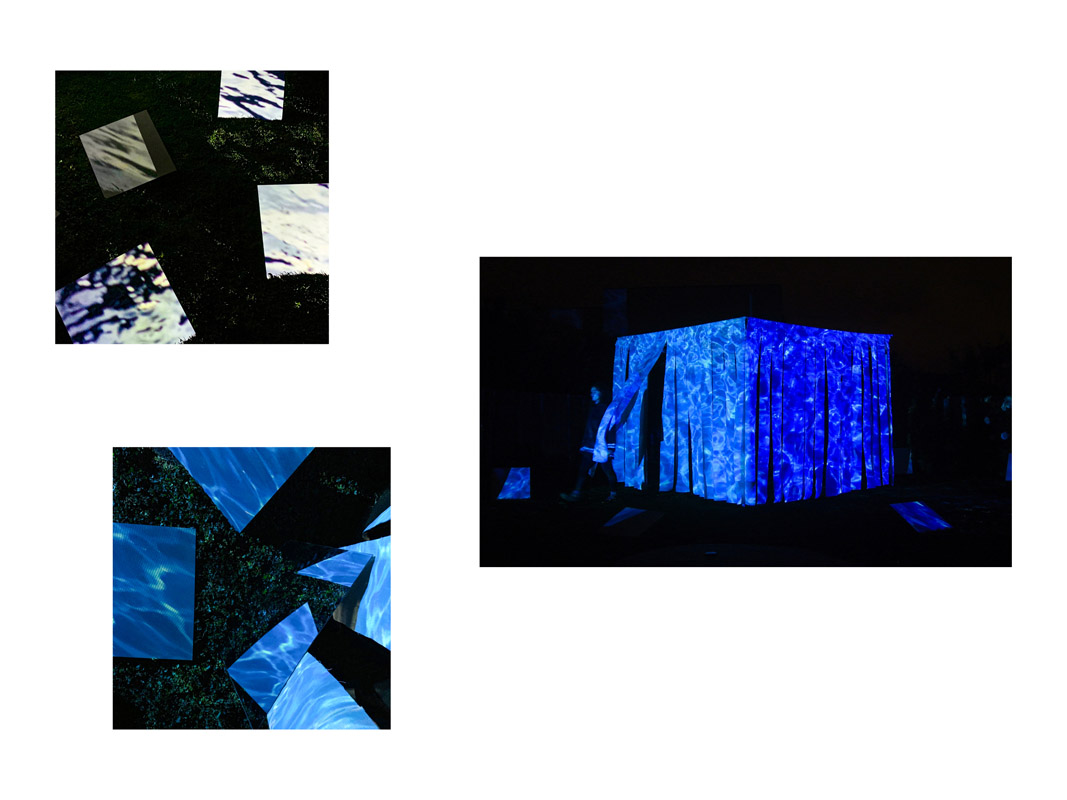COVID-19 and the subsequent lockdowns positioned a unique focus on documenting my daily interactions with water. Research was collected through various surveys and interviews which questioned over 50 people about their connections and relationships with water. This was conducted online using various visual and written prompts.
Visual content was generated through self-documentation of my daily routine. Collected images and videos were further manipulated and enhanced to engage participants to recognise water in new perspectives.
'Deeper than thirst' showcases water in multiple forms and settings. The installation encourages and stimulates self-reflection and mindfulness, which guides participants to explore their relationship with water and the spaces and settings of interaction; provoking them to question their singular and personable relationship with water.
The installation features sound, movement, touch and visuals to form a multisensory experience, uniquely captivating and maintaining one's attention. Through the use of projection upon numerous surfaces in an outdoor environment accompanied by crafted soundscapes, participants are immersed in the space.
The projection-based exhibition engages participants in thought-provoking, participatory ways, provoking new perspectives on seemingly mundane habitual practices, such as taking a shower or even washing the dishes.
The central message of this exhibition rests in water’s unique preciousness. In first world communities, access to clean water is largely taken for granted. This installation strives to push its audience to become more attentive, accountable and responsible and take action towards conservation.








